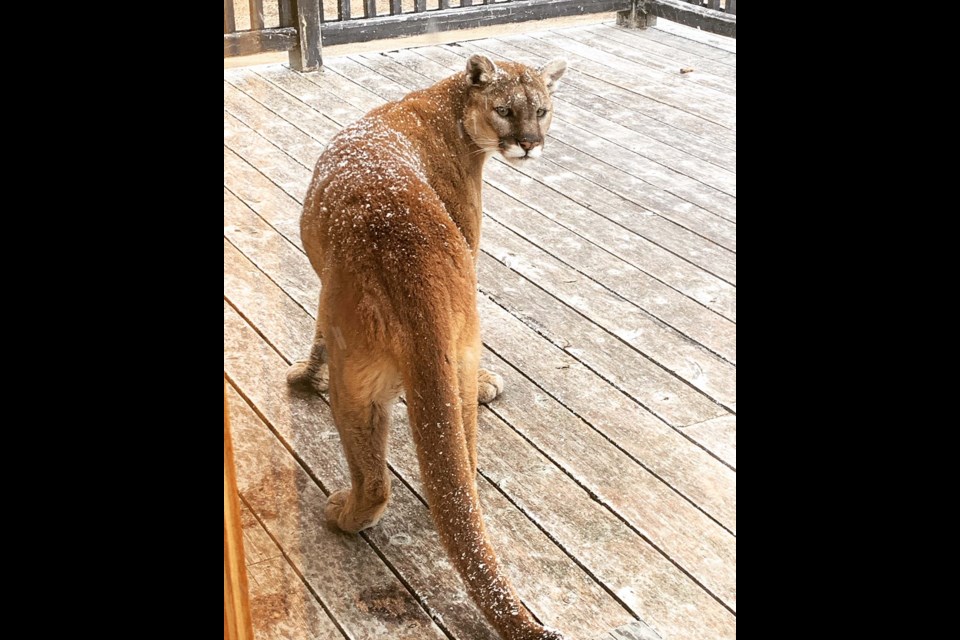Cougars can prowl through St. Albert, but officials say there have been no confirmed sightings of one here in recent weeks.
St. Albert residents posted messages on social media in early October about a possible cougar sighting in Lacombe on Oct. 10 and in Mission on Oct. 14, to the consternation of some.
It’s unclear if either of those sightings were of actual cougars.
Aaron Giesbrecht, manager of policing services with the City of St. Albert, said in an email the city did not receive any reports about a cougar in the week of Oct. 10, but did hear about two coyotes in Oakmont at about 9 a.m. on Oct. 10.
An Alberta Fish and Wildlife spokesperson in the Edmonton office speaking on background on Oct. 15 said her office had not received any reports of cougars in St. Albert in recent weeks. Had officers confirmed the presence of a problematic cougar, they would have issued a notice about it.
Cougars are large predatory cats that eat deer, elk, moose, bighorn sheep, and small mammals, Alberta Environment reports. They live throughout Alberta but are rarely seen in urban areas, typically avoiding open habitats and places near humans unless it is dark. Cougar sightings have been on the rise in the last decade because of rising deer populations and the spread of humans into traditional cougar habitats, such as mountains and foothills.
Cougar or coyote?
Cougars are often confused with other animals such as coyotes, bobcats, house cats, and yellow-coloured dogs, Alberta Environment notes.
There are several ways to tell coyotes and cougars apart, said biologist Colleen Cassady St. Clair, who studies human-wildlife conflict at the University of Alberta. While cougars are a uniform tan colour, coyotes are mostly grey with a bit of tan on their legs. Coyotes have thick, fluffy tails, while cougars have thin, cat-like ones. A coyote has a dog-like face with a long nose, while a cougar has a cat-like one and a very short nose. Cougars are secretive and avoid people, while coyotes often hang out near humans because of habituation.
The province encourages anyone who thinks they have spotted a cougar in an urban area to report it to Alberta Fish and Wildlife.
To avoid attracting cougars, the province advises residents to avoid leaving food or salt licks out for deer, as those can attract cougars. Homeowners can also close off spaces beneath decks with wire mesh and keep thick vegetation away from their homes to make them less attractive to cougars.
If you see a coyote, St. Clair said to yell at and harass it to encourage it to fear humans. If you see a cougar, back away slowly, get your pets and people indoors, and alert your neighbours.
“Cougars are ambush predators, and the best way to stay safe if you think there could be a cougar nearby is to walk in a group and keep your dog on a leash,” she said.
Visit www.alberta.ca/cougars for information on cougars. St. Albert residents who spot a suspected cougar in city limits should call the Edmonton Fish and Wildlife office at 780-427-3574.




